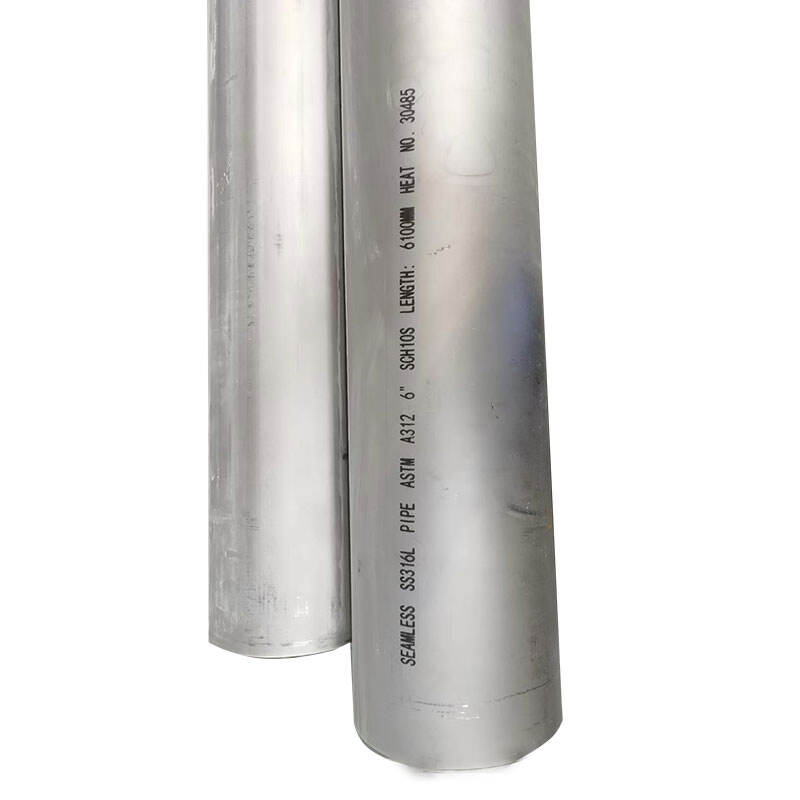Selecting the appropriate stainless steel pipe for your specific application can significantly impact project success, system longevity, and overall cost-effectiveness. The choice of stainless steel pipe grade influences corrosion resistance, mechanical properties, and performance under various operating conditions. This comprehensive guide will help you navigate the complex world of stainless steel pipe selection, ensuring you make informed decisions for your industrial applications.
The operating environment plays a crucial role in determining the most suitable stainless steel pipe grade. Different environments present unique challenges, from atmospheric exposure to chemical processing. Marine environments, for instance, demand higher corrosion resistance due to constant exposure to chlorides. Industrial settings might require resistance to specific chemicals or temperature variations.
When evaluating environmental factors, consider the presence of corrosive agents, temperature fluctuations, and exposure to various chemicals. Grade 316 stainless steel pipe offers superior corrosion resistance compared to Grade 304, making it ideal for marine applications and chemical processing. The addition of molybdenum in Grade 316 enhances its resistance to pitting and crevice corrosion.
Operating temperatures and pressure conditions significantly influence stainless steel pipe selection. High-temperature applications require grades that maintain their structural integrity and corrosion resistance at elevated temperatures. Austenitic grades like 304L and 316L exhibit excellent high-temperature performance while maintaining good ductility at sub-zero temperatures.
Pressure ratings must be carefully considered to ensure the selected stainless steel pipe can safely handle system requirements. Wall thickness and schedule numbers play crucial roles in pressure capacity. Engineers must calculate required wall thickness based on design pressure, temperature, and applicable safety factors.
The mechanical properties of stainless steel pipe grades vary significantly, affecting their suitability for different applications. Tensile strength, yield strength, and hardness are key parameters to evaluate. Duplex stainless steel pipes offer higher strength compared to austenitic grades, making them suitable for high-pressure applications while maintaining good corrosion resistance.
Consider the impact of temperature on mechanical properties, as strength values typically decrease at elevated temperatures. Some grades maintain better strength at high temperatures, while others excel in cryogenic applications. The selection process must account for these variations to ensure optimal performance throughout the system's lifecycle.

The ease of fabrication and installation can significantly impact project costs and timeline. Some stainless steel pipe grades are more weldable than others, while some may require special handling during bending or forming operations. Austenitic grades generally offer excellent weldability and formability, making them preferred choices for complex installations.
Consider the required fabrication methods, including welding procedures, bending requirements, and end preparation needs. Grade selection should balance mechanical properties with fabrication ease to optimize installation efficiency and cost-effectiveness.
While initial material costs often influence stainless steel pipe selection, focusing solely on purchase price can lead to higher long-term expenses. Consider the total life cycle cost, including installation, maintenance, and potential replacement costs. Higher-grade stainless steel pipe may command premium pricing but often delivers superior long-term value through extended service life and reduced maintenance requirements.
Evaluate the cost implications of different grades in the context of your specific application. Factor in the potential costs of system downtime, maintenance operations, and replacement scenarios when comparing options. Sometimes, investing in a higher-grade stainless steel pipe initially can provide significant cost savings over the system's lifetime.
Different stainless steel pipe grades require varying levels of maintenance and offer different reliability characteristics. Consider the accessibility of installed piping for inspection and maintenance activities. Some applications may justify selecting a higher-grade material to reduce maintenance requirements and enhance system reliability.
Regular inspection and maintenance programs should be tailored to the selected grade and application requirements. Proper material selection can significantly reduce the frequency and extent of required maintenance activities, leading to improved operational efficiency and reduced lifecycle costs.
Industry-specific regulations and standards often dictate minimum requirements for stainless steel pipe selection. Common standards include ASTM, ASME, and EN specifications. Ensure selected grades meet all applicable regulatory requirements and certification needs for your specific application.
Documentation requirements vary by industry and application. Maintain proper material certification and testing records to demonstrate compliance with relevant standards. This documentation proves crucial for quality assurance and regulatory compliance purposes.
Implement appropriate quality assurance measures during the selection and procurement process. Verify material certifications, conduct necessary testing, and ensure proper material traceability. Consider specific testing requirements for your application, such as hydrostatic testing, non-destructive examination, or chemical analysis.
Establish clear specifications and acceptance criteria for stainless steel pipe procurement. Working with reputable suppliers who maintain robust quality management systems helps ensure consistent material quality and performance.
Grade 316 stainless steel pipe contains molybdenum, which provides enhanced corrosion resistance compared to Grade 304. While both grades offer good general corrosion resistance, 316 performs better in marine environments and chemical processing applications. Grade 316 typically commands a higher price but offers superior performance in demanding environments.
Wall thickness determination involves calculating pressure requirements, temperature conditions, and safety factors according to applicable design codes. Consider both internal pressure capability and external loading conditions. Consulting with engineering professionals or using established calculation methods from ASME or similar standards ensures proper sizing.
Consider duplex stainless steel pipe when applications require higher strength combined with good corrosion resistance. Common applications include high-pressure systems, structural components, and environments with chloride exposure. Duplex grades often provide cost-effective solutions for challenging applications by reducing required wall thickness while maintaining performance requirements.
 Hot News
Hot News2025-01-03
2024-10-23
2024-11-15